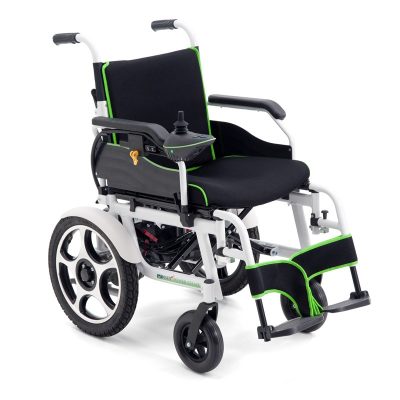The evolution of electric wheelchairs continues to be shaped by innovation, with exciting possibilities on the horizon. As technology advances and user needs evolve, the future of electric wheelchairs holds great promise. Here’s a glimpse into the potential innovations that could shape the future:
- Advanced Sensors and AI: Electric wheelchairs could incorporate even more sophisticated sensors and artificial intelligence (AI) algorithms. This would enable real-time analysis of the environment, allowing the wheelchair to adapt to obstacles and navigate complex situations autonomously.
- Energy Harvesting: Future electric wheelchairs might harness energy from the environment, such as solar panels on the chair’s surfaces, to extend battery life and reduce reliance on external charging.
- Biometric Integration: Integration of biometric sensors could allow electric wheelchairs to monitor the user’s health metrics, adjusting factors like seat position and support to optimize comfort and well-being.
- Haptic Feedback and VR: Incorporating haptic feedback and virtual reality (VR) interfaces could enhance the user experience by providing sensory feedback about the surroundings, enabling greater spatial awareness.
- Collaborative Mobility: The future could bring about interconnected mobility systems, where electric wheelchairs can communicate with other vehicles, pedestrians, and infrastructure to navigate safely and efficiently.
- Predictive Maintenance: Advanced diagnostics and predictive maintenance features could identify potential issues in electric wheelchairs before they become serious problems, enhancing reliability.
- Exoskeleton Integration: Electric wheelchairs might integrate with exoskeleton technology, enabling users to stand, walk short distances, or access higher shelves while remaining in their wheelchairs.
- Neurological Interfaces: Research in brain-computer interfaces could lead to electric wheelchairs being controlled directly by the user’s thoughts, further enhancing accessibility for individuals with limited physical mobility.
- Modular Designs: Future designs could feature modular components that allow users to easily upgrade or replace specific parts, extending the lifespan of the wheelchair and reducing waste.
- User-Centric Design: Personalization will likely continue to be a driving force. Future electric wheelchairs could be tailor-made to suit users’ unique needs, preferences, and physical requirements.
The future of electric wheelchairs holds a wealth of possibilities that can significantly enhance mobility, independence, and quality of life for individuals with mobility challenges. As technology continues to advance, these innovations have the potential to redefine what’s achievable in terms of accessibility and inclusivity.














